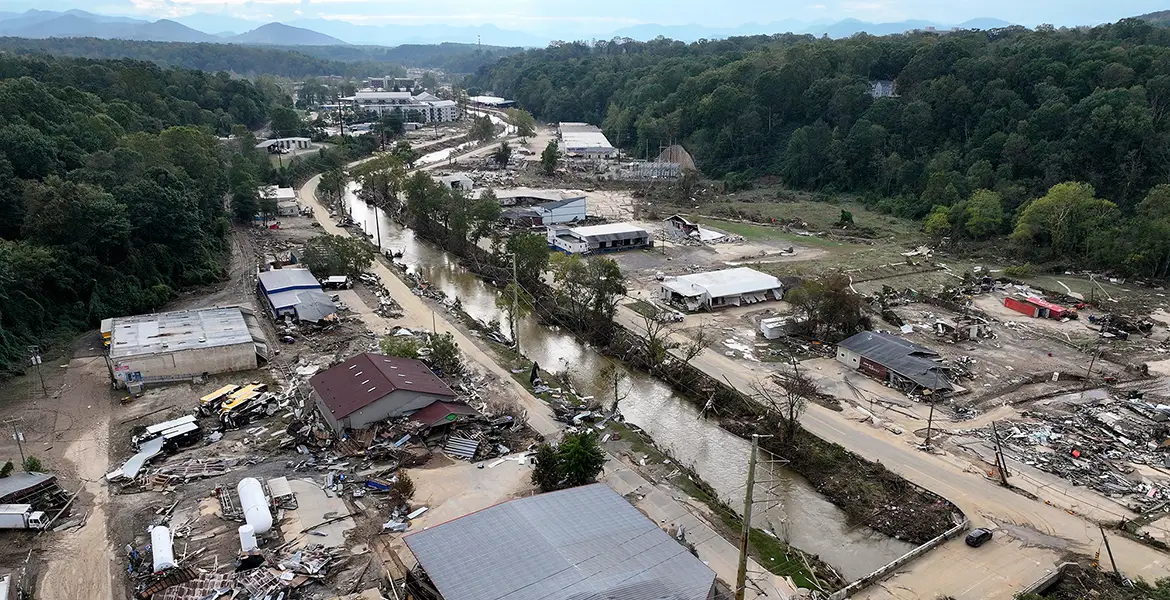We asked for your comments on Tom Doak’s How to Rate Your Home Course, and we were flooded with responses! We have selected the best comments and George Peper, Jim Frank, and Graylyn Loomis from the LINKS Editorial Staff have responded.
Do you agree with their points? Do you agree with Tom Doak’s original premise? Let us know.

“A few points:
1) If golfers knew how much work it takes to build a course, whether it’s rated highly or not, they’d be kinder in their comments.
2) I’ve always rated my courses by the parking lot. Full is good. Empty is bad. Never had an empty parking lot in 50 years.
3) How many times do you hear of building architects rating their competitors’ designs and selling books about their rating comments? (I will always regret not taking away Tom Doak’s pen when I first gave him a dozer.)”
Perry O. Dye
Thanks, Perry,
1) When you get into a business like golf course architecture, you put yourself out there—your work goes on public display. Enduring the comments of those who play your course is part of the deal.
2) Can’t argue with that—as long as there are no traffic jams on the course!
3) I understand your irritation… but I also enjoy Tom’s books.
-George Peper, Editor
__________

“What strikes me most about Tom’s categories is his emphasis on walkability. I could not agree more. All the great classics display green to tee closeness, which I believe is not only an art form but also genius in concert with the given land. In my opinion, any modern architect can build a great golf course with use of pans and bulldozers (every hole would be downhill with best views of the property) versus Ross and Tilly with use of mule and spade. It’s Picasso painting by computer.”
Jon Luria
Jon, Walkability is a major criterion in my book as well. This point was raised recently at the PGA Show where I tried out the selection of golf surfboard / skateboards that are now on the market. The use of a cart / golf surfboard removes a large part of my enjoyment in a round!
On the pans and bulldozers, does the use of machinery take away from a great modern design? I don’t think so. Just as we don’t discount a chef for using modern techniques to cook classic food, I think modern architects shouldn’t be discounted for their use of machinery, as long as the course is natural, walkable, and fun.
-Graylyn Loomis, Assistant Editor
__________

“I like these descriptive components so much better than I like the rating scale itself. You nail what’s necessary to create a great golf course, IMO. There is something so reductionist and falsely objective about the NUMBERS.”
Dan Kelly
Dan, I agree with you 100 percent. The numbers are almost meaningless since you rarely know what they correspond to. Did a course get a high rating for difficulty but a lower one for shot value or scenery? The problem with descriptive comments, however, is that you have to be descriptive, you have to think about the various qualities of a course and be able to describe them and that is far more difficult than simply assigning a numeric value. I’d rather know the reasoning behind a vote than simply its score.
-Jim Frank, Senior Editor
__________

“I am neither an employee nor a relative of Tom Fazio, but I can honestly say I have never played a bad Fazio course and will go out of my way to find one.
Another point: One aspect that no one seems to mention much is weather. It’s difficult to enjoy a course when you’re walking it in 100-degree temps and 99% humidity, and equally difficult when you’re battling 25-50 mph winds on the Oregon coast. (Are you listening, ‘Bandonites’?)”
Donny B
Agreed, Donny, there are no bad Fazio courses—though I find some to be much better than others. Tom’s greatest strength may be his “definition”—his ability to place fairway bunkers, incorporate water hazards, contour fairways—to give golfers a clear view of the assignment facing them from the tee.
Yes, lousy weather can detract from the enjoyment of a course—but it can also add. If you haven’t already done so, get yourself across the pond and play some links courses in a stiff wind. Sooner or later you’ll have a day when everything clicks, when you’re able to use a combination of mind and muscle to conquer the breezes and play a great round. On that day, you’ll feel far greater satisfaction than a routine round in perfect conditions can ever bring.
-George Peper, Editor
__________

“’Beauty is in the eye of the beholder.’ Never has that been truer than in the rating and ranking of golf courses. I think Tom’s criteria are correct, but I struggle with the concept of we “great unwashed experts” reducing the experience of a great golf course to numbers. A qualified course rater/ranker is as rare as a Master Sommelier.”
GVD
GVD, your comment hits the nail on the head. The ability for a rater to disregard their own play is something few could do… I know that I enjoy a course more when I’ve played well, but I also know I typically play better on more enjoyable (less penal) courses.
What do you think is necessary for someone to be a qualified course rater? Is there a single answer to what constitutes course greatness or is greatness just where you personally find the most enjoyment?
-Graylyn Loomis, Assistant Editor
__________
“I love Doak courses, and I have no complaints with his bunkering techniques, but I disagree with his assertion that “golfers dig bunkers.” I, at least, have always felt that a sand trap was the last resort when the architect couldn’t come up with any more natural hazard like a tree, or creek, or giant boulder. I don’t hate bunkers, but I want my courses to appear to have grown naturally, as if the architect did nothing more than run a lawn mower through a natural swale among the dunes or forest. While a wind-blown bunker might feel appropriate in a sea-side course, it is a jarring non-sequiter in the forest.
I also question the assertion that greatness cannot be quantified by checking off a bunch of boxes. I’ll concede that beauty is in the eye of the beholder and that aspects of a course are beyond quantification. But I have been experimenting with a course checklist of my own design in which every hole is evaluated for a variety of aspects: elevation change, location of bunkers, forced carries, unique features, etc. Points are awarded for each criteria. Points values can be 1,2, or 3. In addition to rating each hole, the course as a whole would be rated for conditioning and other factors. Add up all the points and you have the course “greatness” rating.”
Dick Dickinson
Dick, You raised two points, you get two responses. I agree that bunkers can seem more natural on a seaside course, but as golf architecture evolved and designers tried to replicate the features of the seminal courses, they found bunkers made a lot of sense as they were hazards that allowed redemption, unlike, say, a lake. They also provide variety as well as a different look. Furthermore, a course should challenge every facet of a player’s game, and that includes sand play.
The problem with box-checking is it’s too simplistic, it doesn’t consider how you assign scores to your variety of aspects. For elevation change, do you give higher points for higher elevations? What are the criteria? Simply giving points eliminates the need to explain and defend your criteria. By all means, construct your own system for “scoring” golf values. Even throw in a multiplier for an especially scenic or challenging course. But it only begins to assess quality. I prefer poetry to rigidity.
-Jim Frank, Senior Editor
__________

“Maintenance must be given consideration. Allow for green, fairway, and rough units as much as possible, (avoid hand mowing, same with watering, plan to be as efficient as possible).
Bunkering should allow for ease of entry and exit for older players and those with physical difficulties. Steep angles should not face toward the sun, (or should be minimized), otherwise they require too much water or burn up. Foot and cart traffic should be considered when placing as well, (not just strategy alone), to avoid wear and also slow down play. Green complexes should challenge but not encourage three putts, and should not be unduly large.”
Andy Carracino
Very sensible, Andy—you sound like a green superintendent! These are not the sexiest considerations in course design, but they surely contribute to the enjoyment of a course.
-George Peper, Editor
__________
“The overall factor in determining if a course is average or not can best be summed up in one word – ENJOYABILITY. True course ratings should factor in the emotional outcome of a round, and not be a result of a number-crunching exercise. If the golfer experiences true ENJOYMENT after a round, regardless of the score, the course should be considered above average.”
John Rostas
John, I couldn’t have said it better myself. The more golf I play, particularly on courses that are ranked on magazine lists, the less weight I give the ratings. Some of my favorite rounds have simply been on the most enjoyable courses. Some of the highly ranked courses I have played were not enjoyable…
-Graylyn Loomis, Assistant Editor
__________

“Of all the fine architects who expressed their views on the first question, the underlying tone of the responses points out the greatest golf architect of any era, and a woman at that. Mother nature has presented history with the greatest layouts of all time. Those notable names, in a humble act as second chair, took the time and patience to reveal locations for pins, tee boxes and a routing that would allow the golfers of any level the journey of appreciation across the landscapes that no bulldozer, regardless of human inspiration, could achieve…
To quantify or itemize the characteristics of a great golf course is to assign a score to the Pieta or the Mona Lisa. Golfers the world over know when they have seen a challenging, yet fair, beautiful, yet rugged, display presented just as they know the Grand Canyon is, well, Grand.”
Tim Alpaugh
Tim, I don’t think anyone will argue with you that the greatest courses are the most natural, by which I mean those that hew closest to what nature presents. But sometimes that means helping Mother Nature with a nip, tuck, or tweak here and there that adds to the challenge or strategy or charm. Not every piece of property is as beautiful or dramatic or difficult as another, so why shouldn’t those who live near flat, boring terrain benefit from the architect’s ability to start with nature and make of it a more interesting, more enjoyable golf course?
I’d go so far to argue that the architect’s true skill is seeing what nature has given him, or her, to work with and then figure out what challenges and enhancements—cribbed from nature’s handiwork in other places—make the most sense, create the best course, and work best with the original landscape. In the end, we’re saying the same thing, making a case against artificiality, no?
-Jim Frank, Senior Editor
_______________




